If you’re thinking about adding a gazebo to your backyard, you’re in for a treat! Gazebos can be an excellent addition to any outdoor living space, providing a comfortable and attractive spot to relax and entertain.
However, choosing the right location for your gazebo is crucial to its success. After all, the location will determine how much you use it and how much value it adds to your property.
There are many factors to consider when choosing the best place to put a gazebo, such as the purpose of the gazebo, the size and style of the structure, the surrounding landscape, and weather conditions.
Fortunately, with a little planning and research, you can find the perfect spot for your gazebo. In this guide, we’ll explore the best places to put a gazebo, potential challenges you may face, and how to overcome them. So, let’s get started and find the best spot for your new gazebo!
Best place to put a gazebo: Finding the best place to put a gazebo can be a challenging task. The location will determine how often you use it and how much value it adds to your property. Some factors to consider when choosing a location include the purpose of the gazebo, the surrounding landscape, and weather conditions.
With some careful planning and research, you can find the perfect spot for your new gazebo, whether it’s in your backyard, by a pool, or on a deck.
Best Place To Put A Gazebo: Easy Guide
A gazebo can be a beautiful and functional addition to any outdoor space. Here are some of the best places to put a gazebo:
Backyard or Garden:
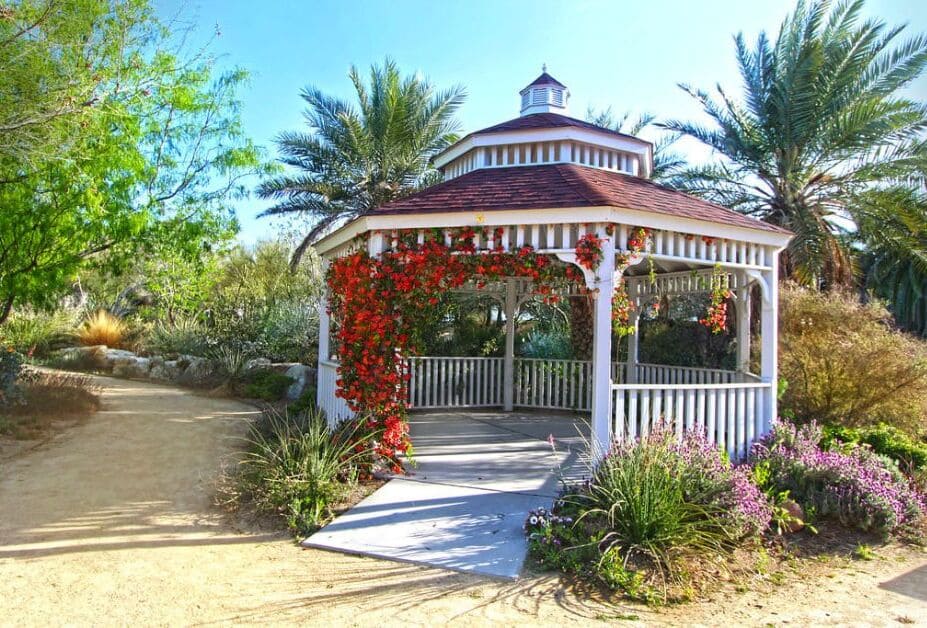
One of the most popular places to put a gazebo is in the backyard or garden. This location provides a private and relaxing space for you and your family to enjoy.
You can place your gazebo near your flower beds, vegetable garden, or other outdoor features to create a cohesive and visually appealing space.
Additionally, you can add outdoor lighting, plants, and other decorations to create an inviting and comfortable environment.
Near a Pool or Pond:
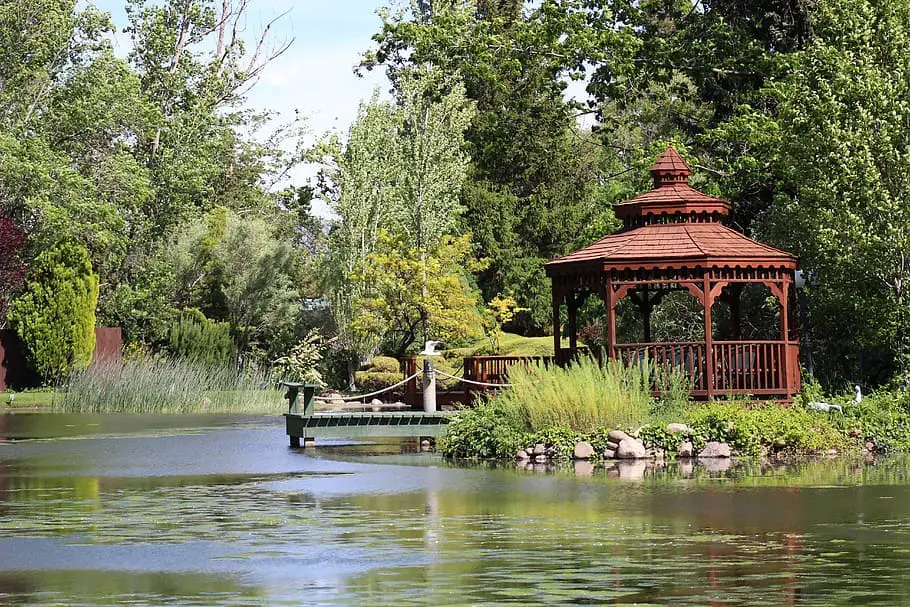
Another popular location for a gazebo is near a pool or pond. This location provides a convenient place to relax and cool off after swimming or playing in the water.
You can choose a gazebo with an open design to take advantage of the surrounding views, or you can opt for a gazebo with walls or curtains for added privacy.
Additionally, you can use your gazebo to store pool or pond equipment or to provide a shady spot for guests to relax.
On a Deck or Patio:
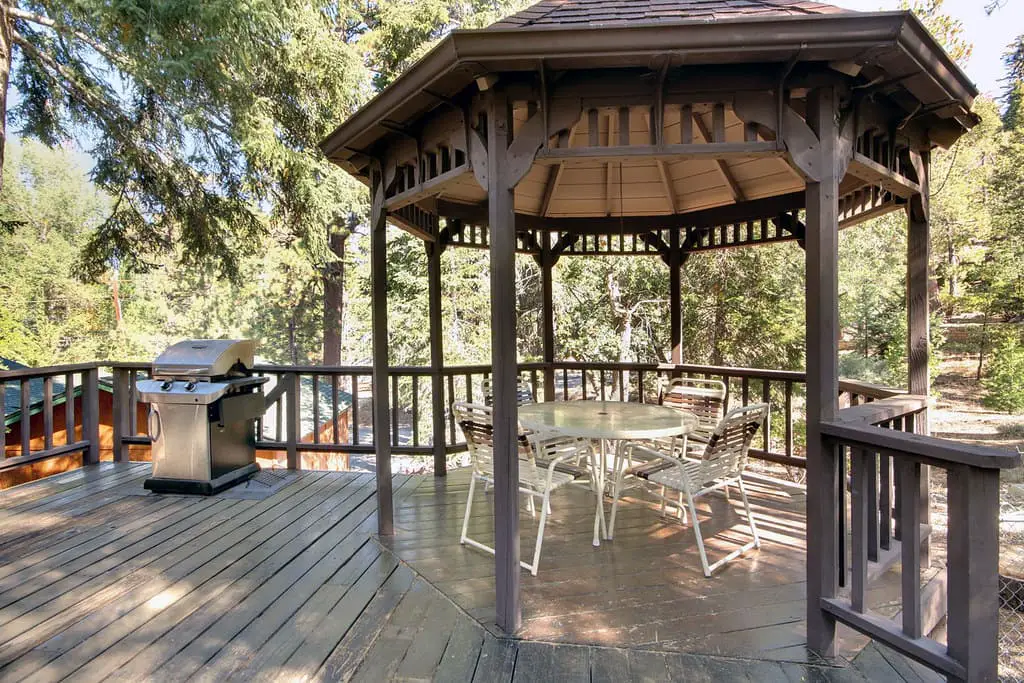
If you have a deck or patio, you can also consider placing your gazebo in this area. This location provides a convenient and accessible space for entertaining guests or relaxing with family.
You can choose a gazebo that matches the style and design of your deck or patio, or you can choose a gazebo that creates a contrasting or focal point in your outdoor space.
Additionally, you can add outdoor furniture, plants, and other decorations to create a cozy and comfortable environment.
Over a Hot Tub or Spa:
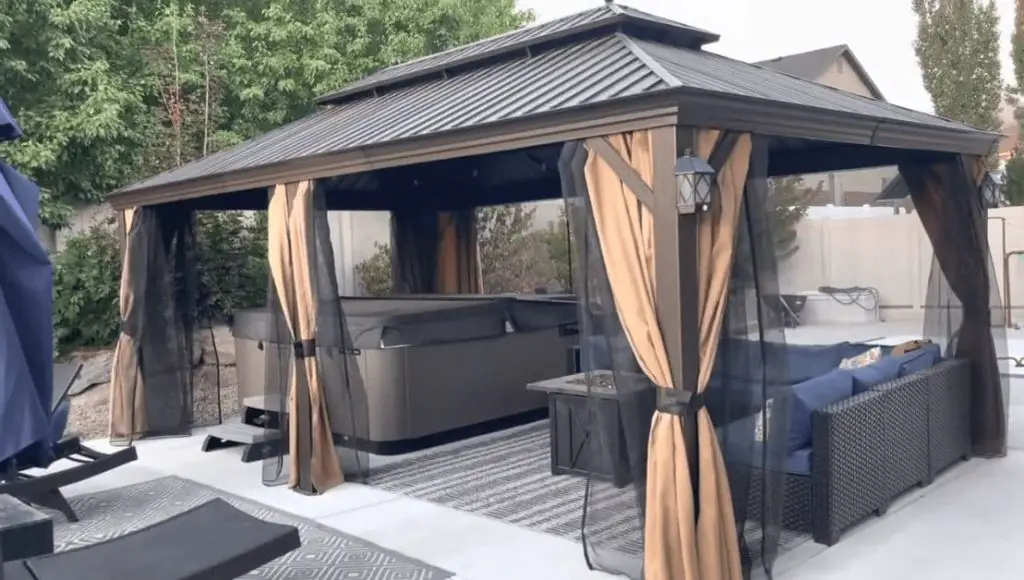
If you have a hot tub or spa in your backyard, you can also consider placing your gazebo over this area. This location provides a private and relaxing space to enjoy the soothing benefits of your hot tub or spa.
You can choose a gazebo with curtains or walls for added privacy, or you can opt for an open design to take advantage of the surrounding views. Additionally, you can add outdoor lighting, plants, and other decorations to create a spa-like environment.
In a Corner or as a Focal Point:
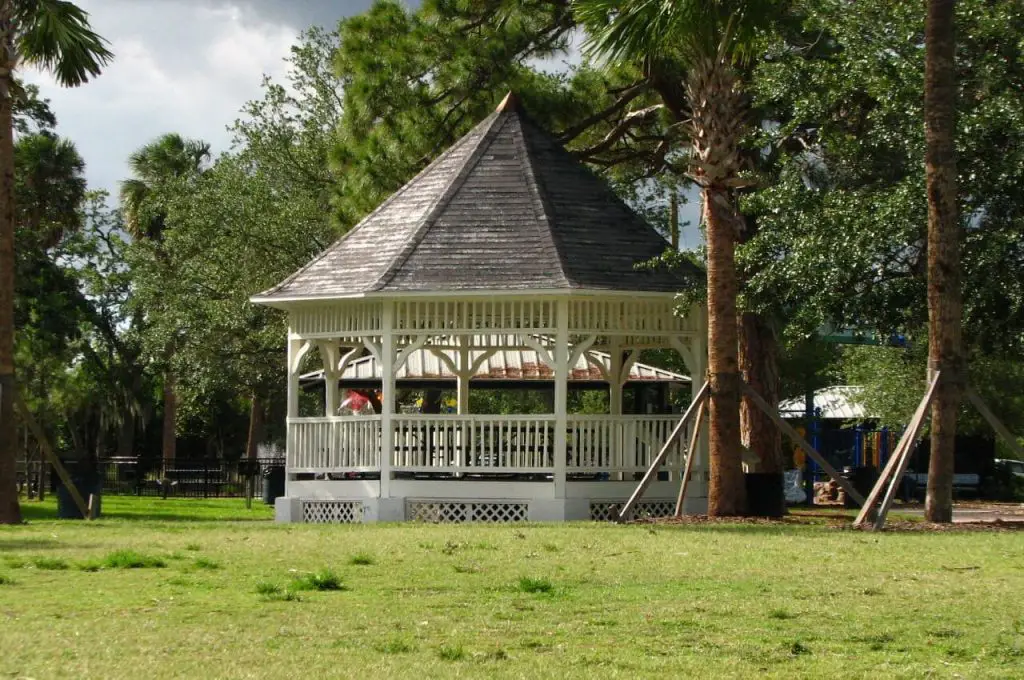
You can also consider placing your gazebo in a corner or as a focal point in your backyard. This location can create a visually appealing and functional outdoor space.
You can choose a gazebo that matches the style and design of your outdoor space, or you can choose a gazebo that creates a contrasting or focal point in your backyard.
Additionally, you can add outdoor furniture, plants, and other decorations to create a cozy and comfortable environment.
Near a Fire Pit or Outdoor Kitchen:
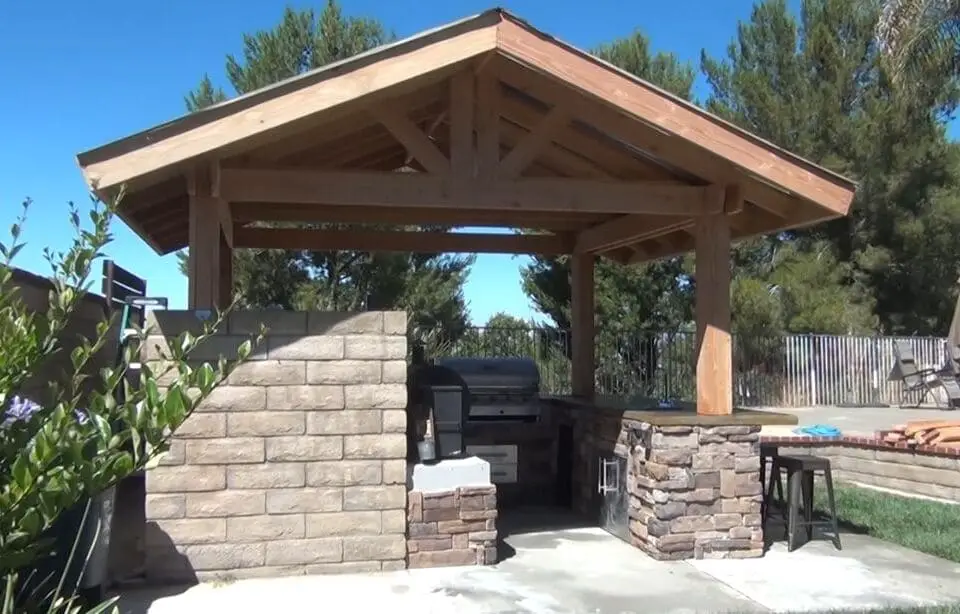
If you have a fire pit or outdoor kitchen in your backyard, you can also consider placing your gazebo near this area. This location provides a convenient and comfortable space to relax and enjoy the warmth of a fire or the aromas of cooking food.
You can choose a gazebo that matches the style and design of your outdoor space, or you can choose a gazebo that creates a contrasting or focal point in your backyard. Additionally, you can add outdoor furniture, plants, and other decorations to create a cozy and comfortable environment.
Factors to consider when choosing the location of a gazebo
When choosing the location of a gazebo, there are several factors to consider to ensure that you select the best possible spot. Here are some of the most important factors to keep in mind:
Purpose of the Gazebo:
When choosing a location for a gazebo, it’s important to consider the purpose of the structure. Some people use gazebos as a place to entertain guests, while others use them as a quiet retreat to relax and unwind.
If you plan to use your gazebo for entertaining, you may want to place it near your home, where it will be easily accessible. If you’re looking for a more secluded space to relax, you may want to place your gazebo in a more private area of your yard.
Size and Style of the Gazebo:
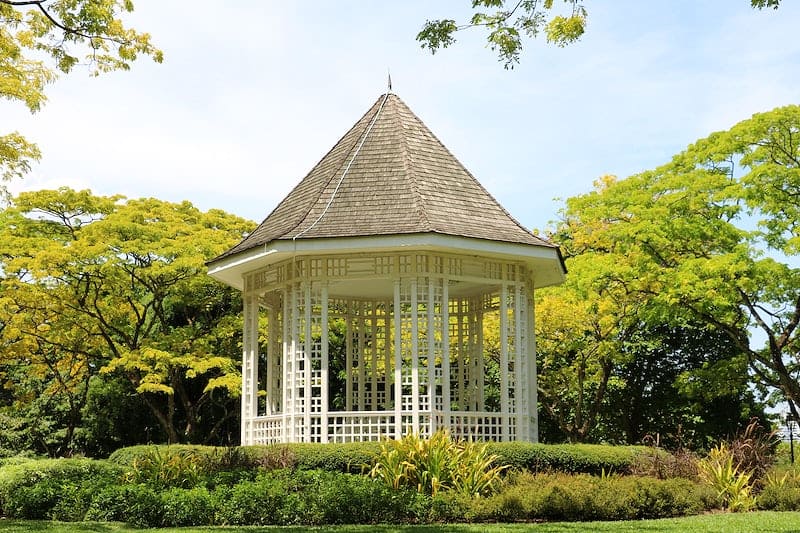
The size and style of your gazebo can also impact its location. Larger gazebos may require more space and may be more difficult to move once they are installed. Additionally, certain styles of gazebos may look better in certain areas of your yard.
For example, a rustic gazebo may look better in a wooded area, while a more modern style may be better suited to a sleek, modern landscape.
Surrounding Landscape:
The surrounding landscape is also an important factor to consider when choosing the location of your gazebo. You’ll want to choose an area that complements the natural beauty of your yard and the surrounding landscape.
For example, if you have a large garden, you may want to place your gazebo near your flower beds or vegetable garden. If you have a water feature, such as a pond or fountain, you may want to place your gazebo nearby to take advantage of the calming sound of flowing water.
Sun and Shade Exposure:
When choosing a location for your gazebo, it’s important to consider the amount of sun and shade exposure the area receives. If you live in a hot, sunny climate, you may want to choose a location that is shaded for part of the day.
Alternatively, if you live in a cooler climate, you may want to choose a location that receives more sun to take advantage of the warmth. You can also add shade to your gazebo with curtains or other types of coverings.
Wind and Weather Conditions:
Wind and weather conditions can also impact the location of your gazebo. You’ll want to choose an area that is sheltered from strong winds and inclement weather.
Additionally, if you live in an area that experiences heavy rain or snow, you may want to choose a location that is elevated or has good drainage to prevent water from accumulating around the gazebo.
Privacy and Views:
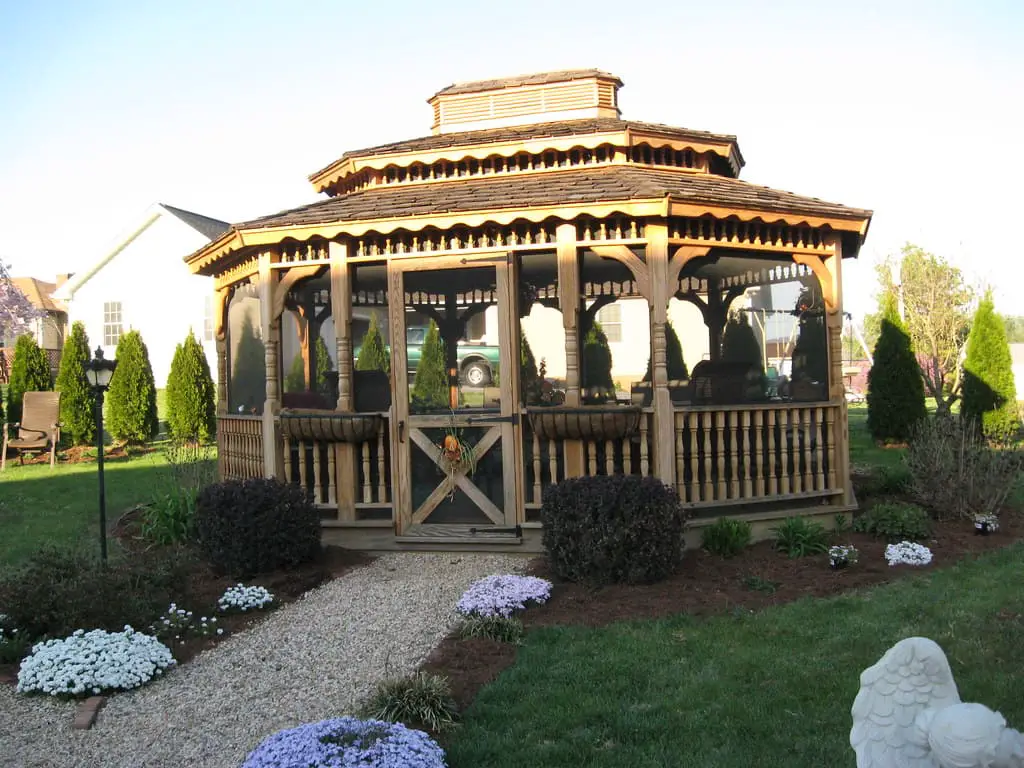
Privacy and views are also important considerations when choosing a location for your gazebo. If you’re looking for a more private space, you may want to place your gazebo in a secluded area of your yard, away from neighbors or other people passing by.
Alternatively, if you have a beautiful view, such as a mountain or lake, you may want to place your gazebo in an area where you can take advantage of the scenery.
Accessibility:
Finally, when choosing a location for your gazebo, you’ll want to consider accessibility. You’ll want to choose an area that is easy to access, both for you and your guests.
If you plan to use your gazebo for entertaining, you may want to place it near your home or other areas where your guests will be congregating. Additionally, if you have mobility issues, you may want to choose a location that is easily accessible, without steps or other obstacles.
Potential challenges and solutions
When it comes to building a gazebo, there are some potential challenges that you may face. However, with careful planning and consideration, these challenges can be overcome.
Here are some of the most common potential challenges when building a gazebo and their solutions:
Building Codes and Regulations:
One of the potential challenges when building a gazebo is complying with building codes and regulations. Every city and state has different building codes and regulations that need to be followed when building a structure, including gazebos.
Before starting your gazebo project, it is essential to check with your local authorities to obtain the necessary permits and ensure that your gazebo design complies with the building codes and regulations in your area.
It is also a good idea to hire a professional contractor who is familiar with the local building codes and regulations to avoid any potential issues.
Utility Lines and Underground Pipes:
When building a gazebo, it is important to be aware of utility lines and underground pipes that may be present in your backyard. If you are not careful, you can easily damage these lines or pipes, which can cause significant problems and costly repairs.
Before starting your gazebo project, it is crucial to contact your utility company to identify any potential underground lines or pipes in your backyard.
It is also essential to hire a professional contractor who knows how to work around these obstacles safely.
Landscaping and Tree Roots:
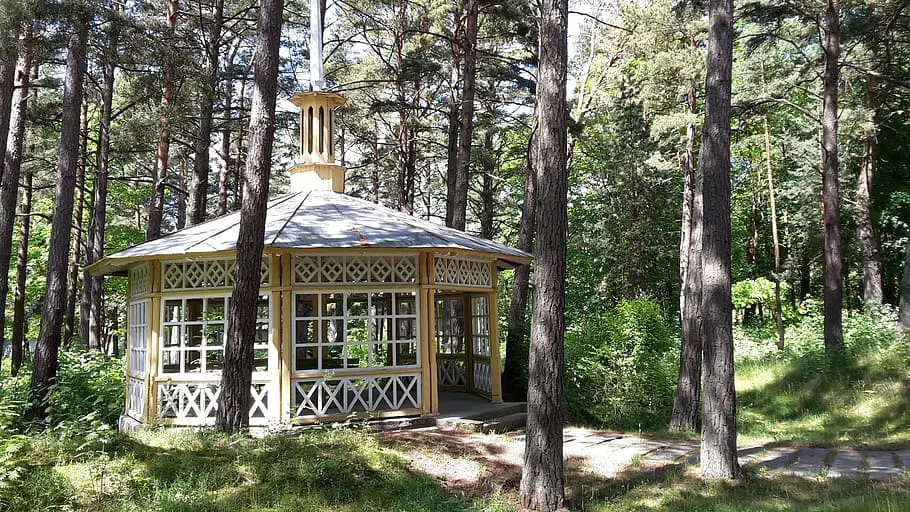
Landscaping and tree roots can also present challenges when building a gazebo. If you have trees or other landscaping features in your backyard, you need to be careful not to damage them when building your gazebo.
Additionally, tree roots can interfere with the foundation of your gazebo, causing it to become unstable. Before starting your gazebo project, it is important to survey your backyard and identify any potential obstacles or challenges.
It is also essential to hire a professional contractor who knows how to work around these obstacles safely.
Sloping or Uneven Terrain:
Sloping or uneven terrain can also present challenges when building a gazebo. If your backyard is not level, it can be difficult to build a stable and secure gazebo. Additionally, uneven terrain can make it challenging to install a level floor or foundation.
Before starting your gazebo project, it is important to survey your backyard and identify any potential obstacles or challenges. It is also essential to hire a professional contractor who knows how to work with sloping or uneven terrain.
Privacy Concerns:
Privacy concerns can also be a potential challenge when building a gazebo. If you want to use your gazebo for private and intimate gatherings, you need to ensure that it is not visible from your neighbor’s backyard or the street.
Additionally, if you live in an area with a high crime rate, you need to ensure that your gazebo is secure and protected from potential intruders. Before starting your gazebo project, it is important to consider the privacy concerns in your area and design your gazebo accordingly.
You can use plants, curtains, or walls to create a more private and secure environment. It is also essential to hire a professional contractor who knows how to build a secure and private gazebo.
FAQs
Q.1 Can you place a gazebo anywhere in your garden?
Yes, you can put a pop-up gazebo on a patio or anywhere in your garden, but it is important to make sure it is safely secured. Pop-up gazebos are designed to be set up and taken down easily, so they can be moved around and stored away when not in use.
Q.2 How long does it take to make a gazebo?
The time it takes to make a gazebo depends on how big it is, what materials are used, and any extra things added to it. A regular-sized gazebo can take a few days to a few weeks to build.
Q.3 How much does a gazebo cost?
The price of a gazebo depends on its size, materials, and added features. Usually, a regular-sized gazebo costs a few hundred to several thousand dollars.
Q.4 Do I need permission to build a gazebo?
The rules for permits and approvals to build a gazebo depend on where you live and your local building codes. It’s necessary to check with your local authorities to find out if you need a permit for your gazebo project.
Q.5 What should I place my gazebo on?
If your gazebo has a floor, it can be placed on a crushed stone pad or a concrete foundation. However, if your gazebo doesn’t have a floor, it should be put on a concrete foundation.
Conclusion
In conclusion, choosing the best location for your gazebo is crucial to its success. The purpose of the gazebo, size, and style, surrounding landscape, sun and shade exposure, wind and weather conditions, privacy and views, and accessibility are important factors to consider when selecting a location.
Whether in your backyard, by a pool, or on a deck, careful planning, and research can help you find the perfect spot for your new gazebo. By keeping these tips in mind, you can create a beautiful and functional outdoor space that you and your family can enjoy for years to come.
We hope that after reading this complete guide, you will know the best place to put a gazebo. If you have any questions, please feel free to ask in the comments section below!

